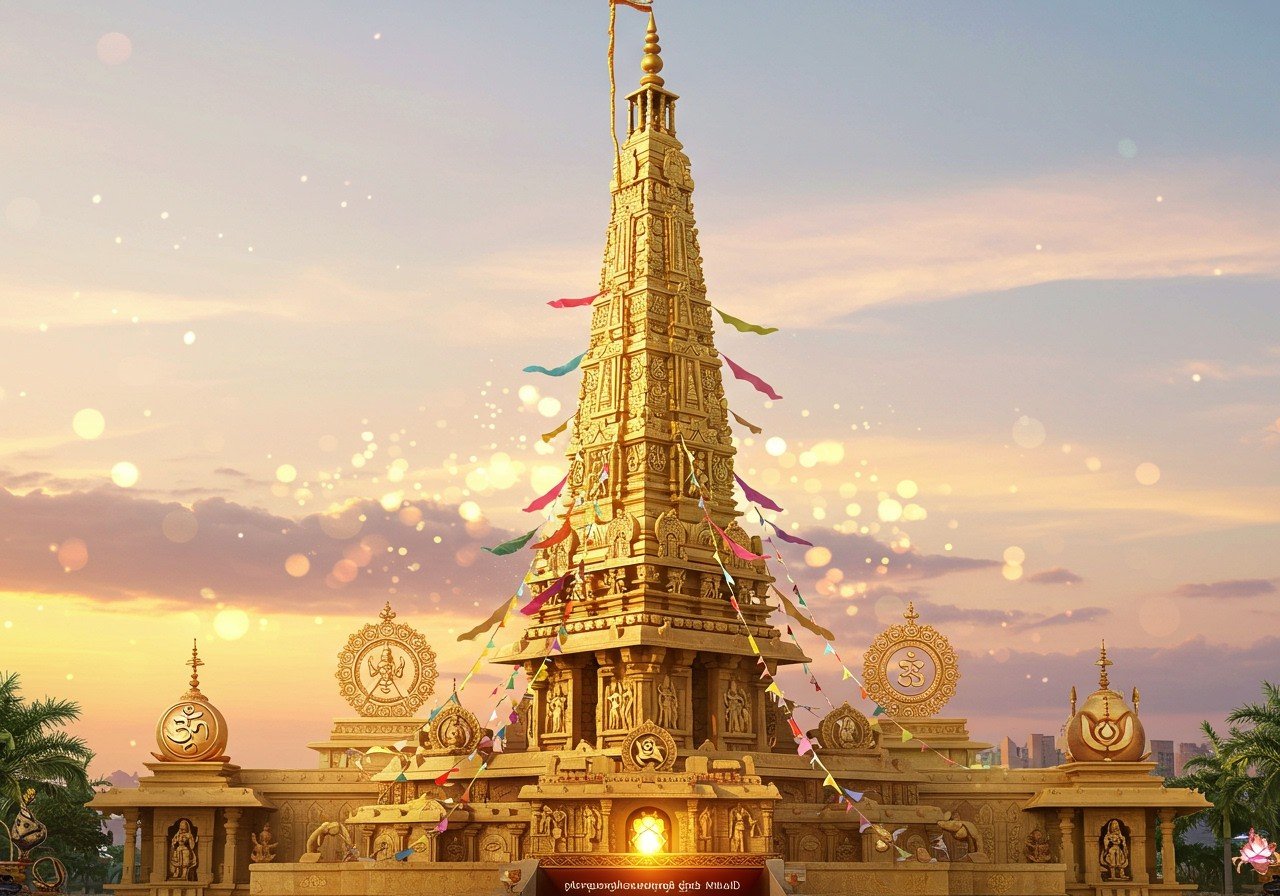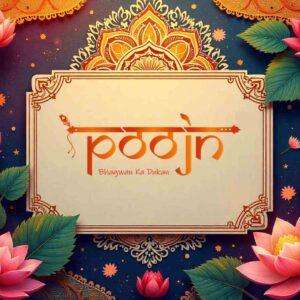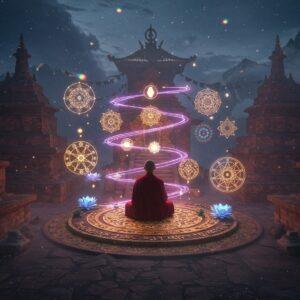
The Dwajasthambam, also known as Dhwaja Stambh or Kodimaram, stands tall and proud in Hindu temples, a beacon of faith often found in front of the main shrine (Garbhagriha). It’s a powerful symbol, resonating deeply within Indian culture and spirituality, especially across South India and Sri Lanka. More than just a flagstaff, it embodies a profound connection between the earthly and the divine. For those seeking to understand and appreciate the nuances of our rich traditions, and who value the convenience of online shopping for authentic pooja items, exploring the significance of the Dwajasthambam is a rewarding spiritual journey.
A Journey Through Time: Origins and Evolution
The Dwajasthambam’s history stretches back to the Vedic period, where it served as a representation of the deity itself. Through the ages, magnificent empires like the Cholas and Vijayanagara left their mark, enriching its architecture and deepening its symbolism. Today, it’s an integral part of temple rituals, especially during festivals, with flags hoisted high, signifying celebration and devotion. The materials used – often wood, copper, or brass – each carry their own unique spiritual meaning, adding layers of cultural significance to this sacred pillar.
Dwajasthambam Across Cultures and Languages
The beauty of the Dwajasthambam is that its significance transcends language barriers. Whether you refer to it as a “flagstaff” in English or by its regional names, the essence of its spiritual symbolism remains constant.
In Tamil Nadu – The Kodimaram
Known affectionately as “Kodimaram” in Tamil, the Dwajasthambam takes center stage in temple architecture. It’s seen as the vital link between heaven and earth, particularly during vibrant festivals like Panguni Uthiram. Tamil artisans, renowned for their intricate craftsmanship, adorn the Kodimaram with exquisite carvings and dazzling gold plating, a testament to their devotion and skill.
In Telugu Traditions – The Dwajasthambham
Telugu-speaking regions refer to it as “Dwajasthambham,” where it holds immense religious value, especially in prominent temples like Tirupati. During festivals and processions, the Dwajasthambham becomes a focal point, drawing devotees together in prayer and celebration. The craftsmanship displayed is often a legacy passed down through generations, reflecting a deep respect for tradition.
In Kannada Practices – The Dwajasthambha
In Karnataka, the “Dwajasthambha” graces temples in Udupi, Dharmasthala, and other sacred sites. It’s a cornerstone of local festivals and processions, embodying the region’s unique spiritual identity. Kannada artisans contribute their distinctive regional styles to its design, adding to the rich tapestry of cultural expressions. The Dwajasthambha’s importance is also woven into local art forms like Yakshagana, showcasing its deep integration into community life.
Unveiling the Symbolism: Cultural and Spiritual Significance
The Dwajasthambam is more than just a physical structure; it’s a powerful symbol that unites diverse cultures through shared spiritual understanding.
- Bridge Between Worlds: It represents the connection between the earthly realm and the heavens, serving as a conduit for prayers and aspirations to reach the divine.
- Symbol of Hope and Victory: The hoisting of the flag on the Dwajasthambam signifies victory over internal obstacles – ignorance, ego, jealousy, and worldly desires – and embodies the hope of attaining spiritual enlightenment.
- Temple’s Pride and Prosperity: The Dwajasthambam also signifies the prosperity and prestige of the temple, reflecting the community’s devotion and the blessings received.
- Divine Presence: Many believe the Dwajasthambam carries the divine power of the deity into the temple, blessing all who enter. It stands as a symbol of righteousness, reputation, and propriety, reminding us of the values that guide a spiritual life.
- Festival Indicator: The raising of the flag marks the joyous commencement of a temple festival, an open invitation for all to participate in the divine celebrations. Lowering the flag signifies the festival’s peaceful conclusion.
- Protection and Blessings: The Dwajasthambam is believed to protect not only the temple itself but also the entire surrounding community from negative energies and evil forces, showering blessings upon all.
Customs and Practices: Reverence and Respect
Specific customs and practices surrounding the Dwajasthambam further highlight its significance in Hindu worship:
- Prostration: Devotees often prostrate before the Dwajasthambam as a mark of respect, but never between it and the idol, ensuring a clear path for divine energy.
- Circumambulation (Pradakshina): It is customary to perform Pradakshina (circumambulation) around the main deity, which often includes the Dwajasthambam, the Vahana (vehicle of the deity), and the Bali Peetam (altar for offerings). This act symbolizes our reverence for the divine and our desire to be close to the source of blessings.
- Offerings and Prayers: In temples that follow Shodasopachara puja (16 ritual services), most of these are offered to the Dwajasthambam alongside the main deity, emphasizing its sacred status.
Poojn.in: Your Partner in Spiritual Observances
At poojn.in, we understand the deep significance of the Dwajasthambam and offer a wide selection of authentic puja items to enhance your spiritual practices. Whether you’re seeking pooja samagri, culturally significant items, or items for your home shrine, we are here to help you create a sacred space that resonates with your faith and traditions. You can also explore our exquisite collection of holy idols.
Embrace the Divine Connection
The Dwajasthambam stands as a timeless symbol of hope, devotion, and the eternal connection between the human and the divine. Whether you’re visiting a temple or seeking to enrich your home with authentic ritual items, let the presence of the Dwajasthambam inspire your spiritual journey. At poojn.in, we are honored to be a part of your spiritual journey, providing you with the finest pooja samagri and culturally significant items to enhance your connection with the divine. Explore our diverse collections and discover the perfect elements to elevate your spiritual practices.


